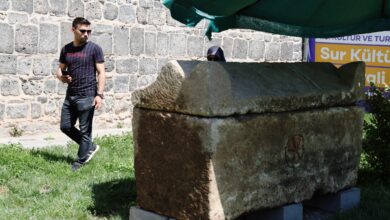Green Complex, Bursa


The Green Complex was built by the Ottoman Sultan Mehmed I in 1420 in Bursa and gave its name to the district in which it is located. It consists of Green Mosque, madrasa, soup kitchen, Green Tomb and inns.
The structures of the complex were freely built on a hill overlooking the plain in the middle of the city, on a land surrounded by a stream on one side and deep cliffs on both sides. Its architect is Hacı İvaz Paşa; ornaments and tiles were made by masters from Tabriz. It takes its name from the color of the tiles in the kulliye structures. The most important structure of the complex is the tomb that Çelebi Mehmed had built for himself.
It is thought that Çelebi Mehmet, who won the struggle for the throne with his brothers, had this tomb built as a sign of power to show a period when magnificent and bright works could be made.
Green Mosque:
It was built by Çelebi Sultan Mehmet by Architect Hacı İvaz. The Green Mosque, which was built with two floors and two domes, took its name from the green tiles used in its decorations. Reflecting the early Ottoman architecture, the Yeşil Mosque draws attention with its flawless architectural technique and magnificent structure. Covered with various motifs and tiles, the Green Mosque creates a fascinating beauty with its interior and exterior architecture. The Green Tomb, which is located opposite the Green Mosque and forms the complex, and the Sultaniye Madrasa, which is used as a museum of Turkish-Islamic Works today, are among the historical monuments that should be seen.







